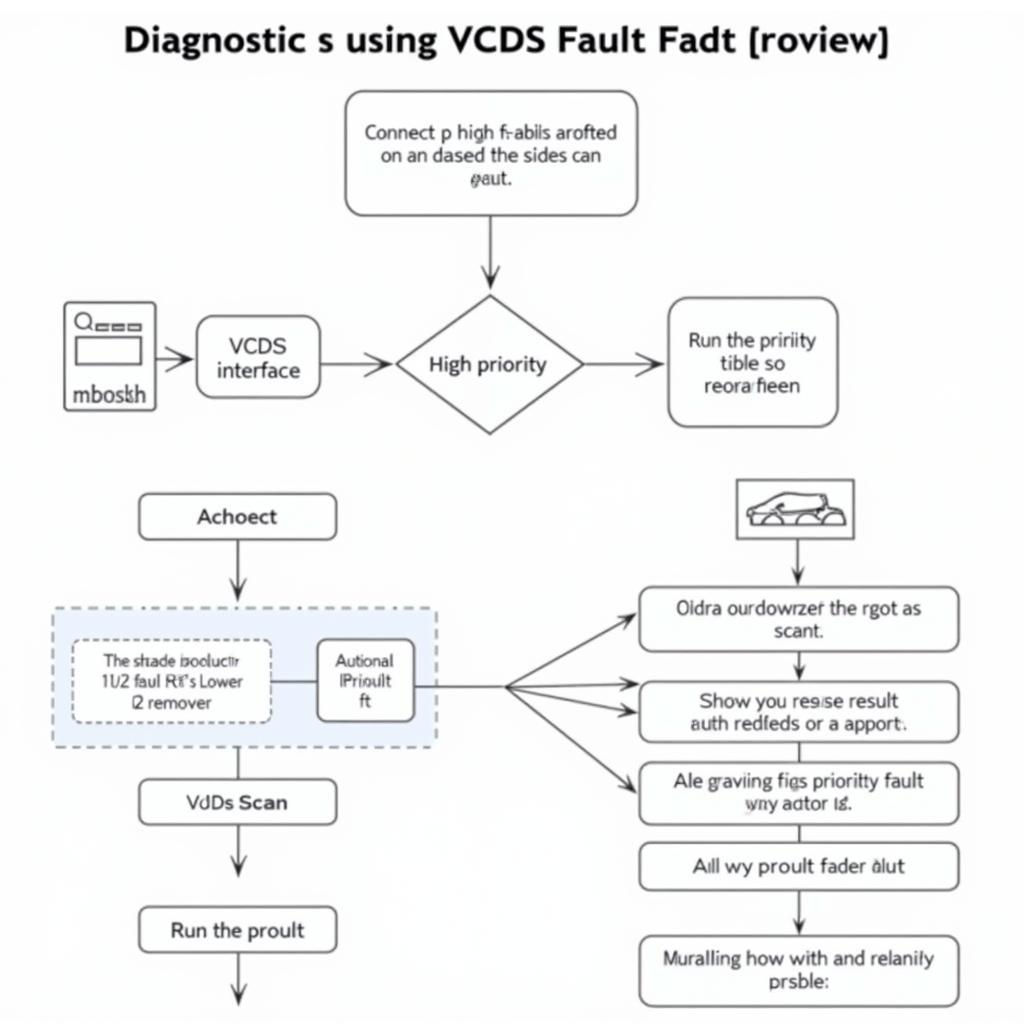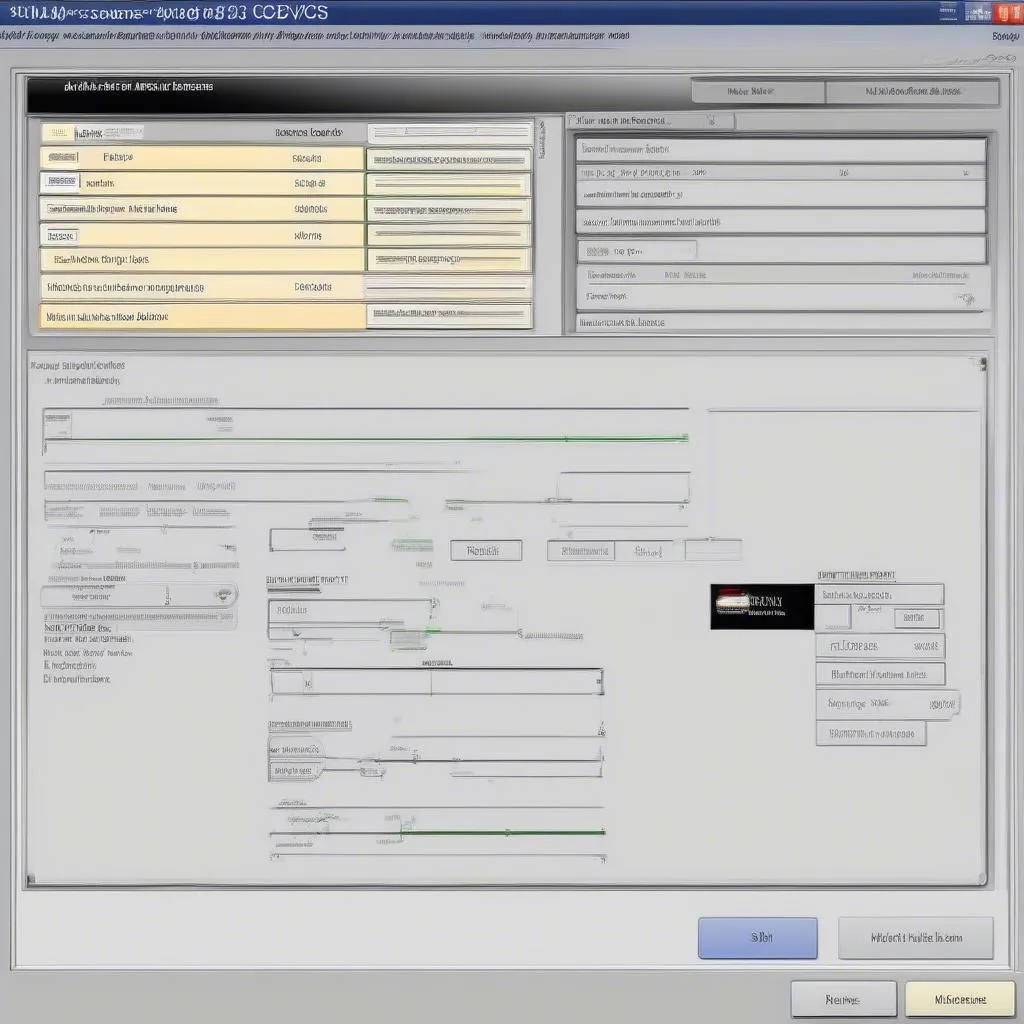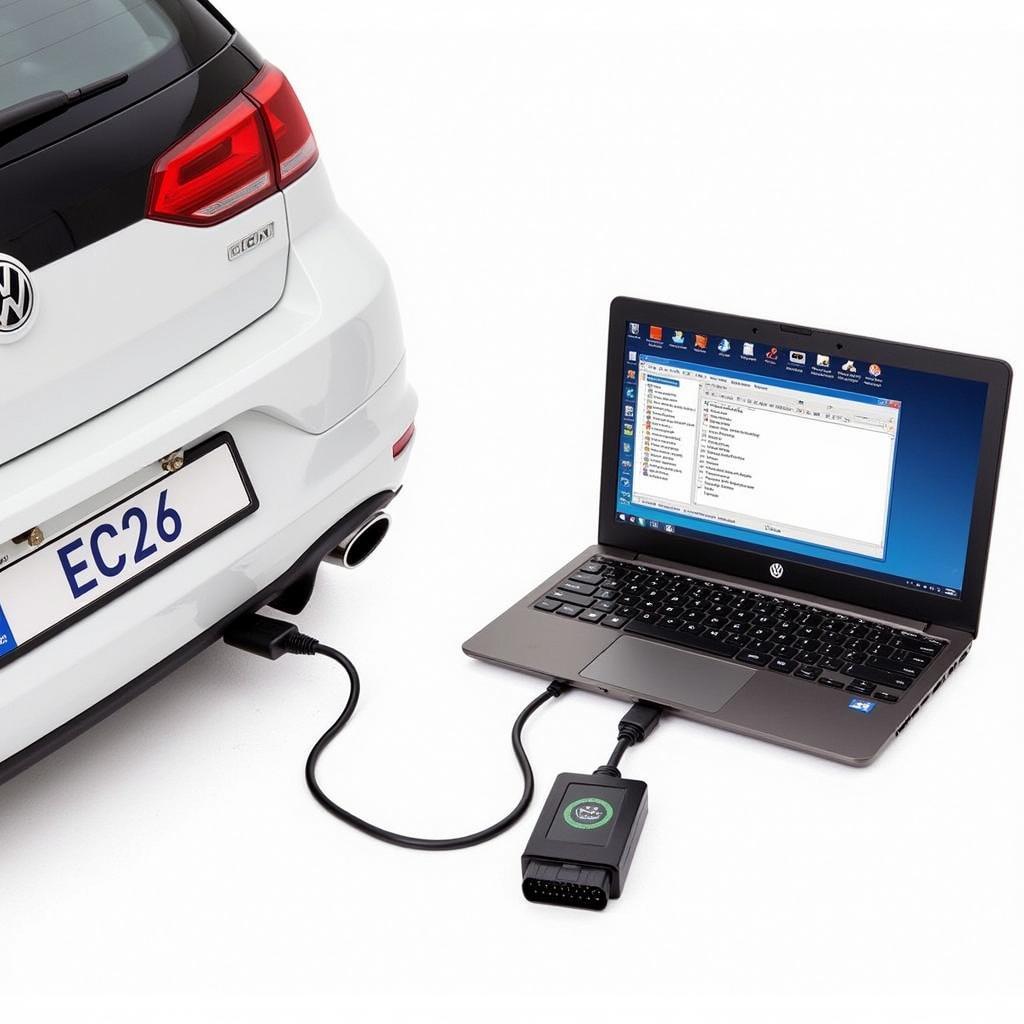When troubleshooting car issues with a VCDS (VAG-COM Diagnostic System), understanding fault priority is crucial for efficient and accurate repairs. VCDS fault priority helps mechanics and car owners pinpoint the root cause of problems, saving time and money. This article will delve into the intricacies of VCDS fault priority, explaining what it is, how it works, and why it matters. After reading this, you’ll be better equipped to interpret your VCDS scan results and address your vehicle’s issues. We encourage you to explore our other helpful resources, like the comparison between the VCDS HEX-NET vs HEX-V2.
What is VCDS Fault Priority?
VCDS fault priority refers to the order in which fault codes are presented in a scan. It’s not simply a random list; it’s a structured hierarchy based on the potential impact of each fault on the vehicle’s systems. While a basic code reader might just display a list of codes, VCDS goes further by organizing them based on their severity and potential relationship to other issues. This helps you avoid chasing symptoms and focus on the most likely culprits.
Understanding VCDS fault priority is key to efficient diagnostics. Addressing high-priority faults first can often resolve seemingly unrelated lower-priority issues. Imagine a complex electrical system like a domino effect – one faulty component can trigger a cascade of problems downstream. VCDS helps identify that first domino.
How Does VCDS Fault Priority Work?
VCDS uses a complex algorithm that considers several factors to determine fault priority. These factors include the fault code itself, the frequency of its occurrence, the presence of related codes, and the vehicle’s specific configuration. This sophisticated approach helps pinpoint the most critical issues, even in complex scenarios with multiple faults.
Think of it like a detective investigating a crime scene. VCDS gathers clues (fault codes) and analyzes the evidence to determine the most likely sequence of events that led to the “crime” (vehicle malfunction).
“VCDS isn’t just reading codes; it’s interpreting them. Understanding the priority helps you connect the dots between different faults and find the real problem,” explains Robert Johnson, Senior Automotive Diagnostician at Johnson Automotive.
Why is VCDS Fault Priority Important?
VCDS fault priority is vital for several reasons:
- Efficient Diagnostics: It helps you focus on the most critical faults first, saving valuable diagnostic time.
- Accurate Repairs: By identifying the root cause of problems, it prevents unnecessary part replacements and ensures effective repairs.
- Cost Savings: Addressing the right issues first prevents wasting money on unnecessary parts and labor.
- Improved Safety: Prioritizing safety-related faults ensures the vehicle is roadworthy and minimizes potential risks.
 VCDS Diagnostic Process Using Fault Priority
VCDS Diagnostic Process Using Fault Priority
VCDS fault priority is like a roadmap for your car’s repair. It guides you through the diagnostic maze, helping you navigate complex issues and find the quickest route to a solution.
Interpreting VCDS Fault Codes and Their Priority
VCDS provides a detailed description for each fault code, along with its priority level. This information is essential for understanding the nature of the problem and its potential impact. Learning how to interpret these codes is a valuable skill for any car owner or mechanic. You may also find our guide on VCDS Seat Belt Warning useful.
Imagine you’re a doctor diagnosing a patient. The symptoms (fault codes) alone don’t tell the whole story. You need to understand the underlying cause and the severity of the condition to prescribe the right treatment (repair).
“Don’t just treat the symptoms, find the disease. VCDS fault priority helps you do just that,” advises Maria Sanchez, Lead Automotive Engineer at Sanchez Motors.
Conclusion
Understanding VCDS fault priority is paramount for effective car diagnostics and repairs. By prioritizing faults based on their severity and potential impact, VCDS empowers car owners and mechanics to pinpoint the root causes of problems, saving time and money. This knowledge allows for a more targeted and efficient approach to troubleshooting, leading to accurate repairs and a safer driving experience.
FAQ
- What does VCDS stand for? VCDS stands for VAG-COM Diagnostic System.
- How do I check VCDS fault priority? Run a scan with VCDS, and the fault codes will be displayed in order of priority.
- Why is my VCDS showing so many fault codes? Multiple fault codes can be triggered by a single underlying issue. VCDS priority helps identify the root cause.
- Can I ignore low-priority VCDS faults? While not immediately critical, low-priority faults can indicate potential future problems.
- How often should I run a VCDS scan? Regular scans, especially before and after repairs, can help catch problems early.
- Do I need special training to use VCDS? While basic operation is straightforward, advanced features require some training.
- Where can I learn more about VCDS fault codes? Online forums, Ross-Tech’s website, and experienced mechanics are valuable resources.
Need help with your car diagnostics or programming? Contact us via WhatsApp: +1 (641) 206-8880, Email: CARDIAGTECH[email protected] or visit our workshop at 276 Reock St, City of Orange, NJ 07050, United States. Our customer support team is available 24/7.


